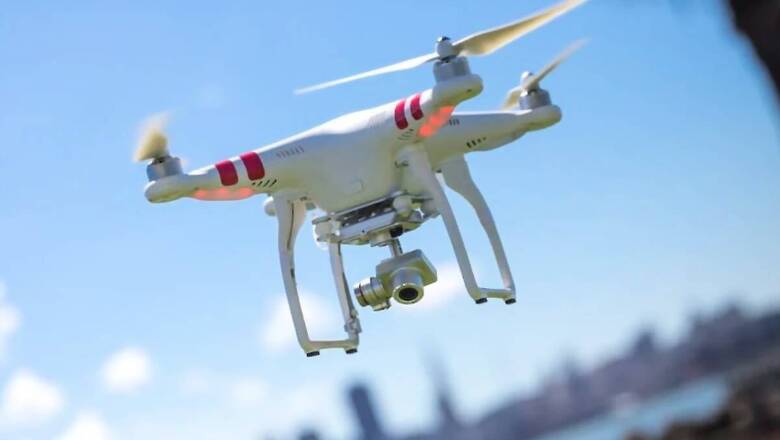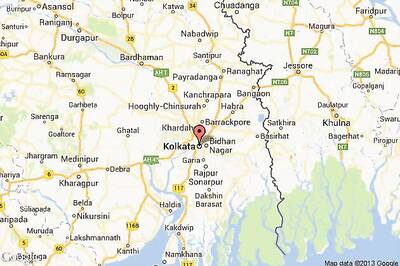
views
With the reprehensible attack on the Indian Air Force base in Jammu, drones have once again come to the forefront. It is not a subject that is new by any means. Indeed, the government has been proactively working on India’s commercial drone policy for a while. The Drone Ecosystem Policy Roadmap was released in 2019 and it was put out for comments in 2020. The policy came into effect after being published in the official gazette in 2021. The policy is challenging as it involves laying regulation for a fast-evolving drone landscape and attempts to address frontier issues that are likely to emerge. Seven key highlights from the policy are as follows:
1. Beyond Visual Line of Sight Operations (BVLOS)
Drones are unique because they are remotely controlled. This allows for operations without visual contact at all times as opposed to an aircraft where a pilot is always present. The earlier policy had limited drone operations to 400 feet but the new policy recognizes that drone operations cannot be limited to 400 ft (120 m) and makes provisions for the same. This is done by means of a transponder that allows the drone to be tracked on radar. It further aims to address Beyond Visual Line of Sight Operations (BVLOS) by focusing on three pillars. These include safety measures, which cover design considerations, certification and operation from authorized droneports; security measures, which mandate embedded software solutions and call for biomodal control at all times (which means the drone operation can be taken over by an unmanned traffic management system); and privacy measures, which highlight principles to be embedded into the design of the drones.
Further airworthiness considerations call for four key parameters where systems are to include failure management, navigation and flight control, communication, detection and avoidance.
2. Autonomous Operations
The beauty of drone operations is that over time they may be automated towards certain segments of flight or for the entire flight. To provide a foundation for this, the policy mandates that drones are to be classified under different weight categories as weight is an indication of potential harm that can be caused. Additionally, the policy recognizes that algorithms may be permitted for drone operations. It calls for pilots operating the drones to be certified and the certification is based on the pilots having knowledge of manned aircraft. Additionally, the certifications have to be carried out in India. Finally, a key concept in the autonomous operations is biomodal control wherein control of the drone can be taken over in case of exigencies.
ALSO READ | What Jammu Twin Blasts Say About Use of Drones For Terror And Why Urgent Measures Are Needed
3. No Permission, No Takeoff (NPNT)
The policy limits drone operations to only authorized drones that are registered with the regulator and are a part of the national droneport registry. All operators for flights have to essentially file three key items for authorization of each flight, namely the flight envelope (or area of flight including flight path), the duration of the flight and the pilot’s credentials.
While it can be argued that this poses a regulatory roadblock, the policy calls for full digitization of the process via a platform called the DigitalSky for registration, authorizations and coordination. Additionally, this requirement acts as an accountability mechanism and over time can provide data on reliability of drones, efficiency of flight envelopes and other variables.
4. Drone Corridors
Drone flights are only permitted in designated drone corridors. These are to be pre-determined and the policy lays down a guideline whereby these will be determined in consultation with the Aviation and Navigation Services (ANS), which is under the purview of the Airports Authority of India. This is essential as drones by design operate in the national airspace and this is controlled by the ANS (excluding military areas).
Finally, additional provisions for rerouting and geo-fencing are also listed, which are technological advances and will require real-time systems and development.
5. Insurance
A dry subject but critical to commercial operations. The policy calls for each drone to be assigned a lifecycle against preset parameters. Additionally, insurance cover has to include cargo liability, hull loss (i.e. the loss of the drone) and third-party risk. One of the challenges of the policy is that penalties are not clearly defined in the case of violations. This impacts the risk premium, and consequently the risk appetite, for drones.
6. Droneports
The current policy only allows for drones to take off and land at designated ports called ‘droneports’. In addition to serving as landing and takeoff bases, these ports can have enhanced functions such as charging capabilities, cargo hold and storage areas and perhaps even training facilities.
ALSO READ | COVID-19 Relief: Telangana Govt Gets Permission for Experimental Delivery of Vaccines via Drones
Additionally, droneport operators are defined as Droneport Service Providers (DSP) and their responsibility is not only safe operation of the droneports but to also maintain logs for each takeoff and landing. In this manner, the policy forces accountability of drone operations by holding both drone operators and droneport owners (DSPs) responsible. Finally, there is a push for a design that promotes a “systematic interoperable droneport system”, which will go a long way in standardizing operations.
7. Regulatory Framework and Mechanism
The policy envisions an online regulatory system with real-time authentication. It further calls for a specialized cell which is to be established within the Directorate General of Civil Aviation (DGCA). The function of the cell is to issue guidelines for the drone industry.
A member of the Airports Authority of India is designated to work collaboratively or as a part of the specialized cell. The requirement for such an individual is that s/he be well-versed with airspace issues of unmanned aerial systems (drones), including definition and refinement of drone corridors.
With the attack on the Jammu airbase, the overall drone policy is likely to be enhanced. In a country as vast and diverse as India, drones can have significant economic implications including the ability to deliver supplies, provide reconnaissance and serve as elements of attack and defence. While the policy attempts to address these, the drone landscape continues to evolve and frontier issues will continue to crop up. Policy prescriptions followed by stringent implementation are the way forward.
Read all the Latest News, Breaking News and Coronavirus News here.



















Comments
0 comment